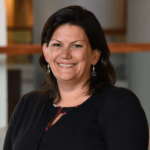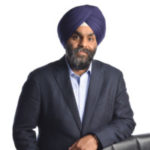
My Guests:
Stephanie Fast & Jeff Melando: Prepare To Tell Future Impact Stories
My guests from 21NTC want you to invest in technology, so you have the outcome and impact data you need to tell great stories. They’re Stephanie Fast and Jeff Melando, both from Social Solutions.


Derrick Gilbert: Modernizing Your IT Function

Now that you have a purpose for your IT upgrade, let’s take it to the next level. Derrick Gilbert explains his people, process and technology framework for IT upgrades that rival corporate achievements. He’s founder of Gil Technology Group. This is also from 21NTC.
Listen to the podcast
Podcast: Play in new window | Download
Get Nonprofit Radio insider alerts!
I love our sponsors!
![]() Turn Two Communications: PR and content for nonprofits. Your story is our mission.
Turn Two Communications: PR and content for nonprofits. Your story is our mission.
We’re the #1 Podcast for Nonprofits, With 13,000+ Weekly Listeners
Board relations. Fundraising. Volunteer management. Prospect research. Legal compliance. Accounting. Finance. Investments. Donor relations. Public relations. Marketing. Technology. Social media.
Every nonprofit struggles with these issues. Big nonprofits hire experts. The other 95% listen to Tony Martignetti Nonprofit Radio. Trusted experts and leading thinkers join me each week to tackle the tough issues. If you have big dreams but a small budget, you have a home at Tony Martignetti Nonprofit Radio.
View Full Transcript
Processed on: 2021-04-24T00:09:32.453Z
S3 bucket containing transcription results: transcript.results
Link to bucket: s3.console.aws.amazon.com/s3/buckets/transcript.results
Path to JSON: 2021…04…535_tony_martignetti_nonprofit_radio_20210426.mp3.378697007.json
Path to text: transcripts/2021/04/535_tony_martignetti_nonprofit_radio_20210426.txt
[00:00:02.84] spk_6:
Hello and welcome to tony-martignetti
non profit [00:00:12.97] spk_6:
radio big non profit [00:00:15.11] spk_7:
ideas for the [00:01:39.94] spk_4:
Other 95%. I’m your aptly named host of your favorite abdominal podcast. Oh and I’m glad you’re with me I’d suffer the embarrassment of axillary hyperhidrosis if you gave me sweats with the idea that you missed this week’s show prepared to tell future impact stories. My guests from 21 NTC want you to invest in technology so you have the outcome and impact data. You need to tell great stories. There’s Stephanie fast and Jeff Blando both from social solutions and modernizing your I. T. Function now that you have a purpose for your I. T. Upgrade. Let’s take it to the next level. Derek Gilbert explains his people process and technology framework for I. T. Upgrades that rival corporate achievements. He’s founder of Gil Technology Group. This is also from 21. NTCC Antonis take two. Your mission based relationships were sponsored by turn to communications pr and content for nonprofits. Your story is their mission turn hyphen two dot c o. And you’ll be hearing more about them throughout our 21 NTC coverage here is prepared to tell future impact stories. [00:01:44.94] spk_7:
Welcome to tony-martignetti [00:01:46.03] spk_1:
Non profit radio coverage of 21 NTC, the 2021 nonprofit technology [00:01:51.64] spk_7:
Conference. We are sponsored at 21 NTC by [00:01:57.84] spk_4:
turn to communications turn hyphen two dot c o. [00:02:01.14] spk_7:
My guest now our Stephanie Fast [00:02:03.33] spk_1:
and Jeff Milan does. They are both with social Solutions. Stephanie [00:02:08.26] spk_7:
is president of Impact [00:02:10.19] spk_1:
Partners at Social Solutions and Jeff is director [00:02:14.51] spk_7:
of Impact Partners. Stephanie Jeff Welcome. [00:02:18.54] spk_2:
Thank you for having us. [00:02:19.82] spk_7:
Have you? [00:02:22.14] spk_4:
Thank you very much. Your workshop topic is impact [00:02:25.07] spk_7:
stories [00:02:26.13] spk_1:
combining stories and data to better prove impact. [00:02:31.83] spk_7:
Uh Stephanie, what we see that some shortcomings in [00:02:36.12] spk_1:
storytelling, are they either to anecdotal or two data driven? Is that the [00:02:40.54] spk_5:
problem? Well, I [00:03:14.74] spk_3:
think that’s the problem historically is that the nonprofits have focused on telling the stories of their work, but they haven’t been in a position to tell the data that to use the data to back up those stories. So the, the readers get heavy on one side, which is the, the emotional side of the stories without having the technological data to support them. So are you know, what we were talking about in our in our session was how do you tell a better story? How do you bring those two together to be more impactful? Because you’re balancing both the heart and the head? [00:03:20.74] spk_7:
Okay, right. [00:03:25.24] spk_1:
The heart and the head. Very good. All right. Uh, important distinctions to make. [00:03:26.54] spk_7:
Right. All right. [00:03:38.94] spk_1:
So because we want to be data driven, but we also want to have some emotional appeal. Um, so Stephanie, let’s stay with you. Why don’t you get us started? How do we, what do we first think about if we’re going to be writing and we want to write one of these impact stories? [00:04:55.94] spk_3:
Well, one of the things that, that Jeff and I talk about a lot is that you have to plan for data, it’s not something that just happens automatically. So most of the non profits that we talked to our, our clients of SSG have already sort of gone through their reporting cycle to their funders, right? They’ve written their 2020 statements, however, you know, um, unique. And um, I want to say, you know, messed up right? For let go better where like 2020 was what it was, right? And, and there was a lot of changes that we saw with funders in terms of their requirements for reporting, they reduced requirements. They allowed nonprofits to have more flexibility and how they spend There are funds. And, and so the reports that the nonprofits created for 2020 sort of reflect that like they had to just, you know, get work done as fast as possible. Kind of blow things out and, and so they’ve, they’ve now had a chance to report back to their funders on what they’ve accomplished. The, what we’ve been talking about is how is 2021 going to be different? Right? 2021? Like when we’re sitting a year from now in March of 2022, you know, looking back at 2021, like what do you want to do differently? When you talk about your impact in 2021 and if you’re going to have a change in your story, then you got to start thinking about the data that’s going to support that story now, right? Like figure out what you want to say next year. And then let’s back it up and look at what do we need to do today to be prepared to tell that story a year from now, Jeff, Jeff, pardon me. I was just seeing if Jeff had anything to add [00:05:17.61] spk_1:
to that. Well, I was gonna ask [00:05:18.61] spk_7:
the same. Yeah, [00:05:19.44] spk_1:
absolutely. We’ve got to get to Jeff Jeff. All right. So, so yes, we’re going to predict what we want to be able to say. So how do we start now deciding what to capture to say that a year from now? [00:06:46.84] spk_2:
I think, I think a lot of nonprofits, especially the providers of human services that we get to work with in our, in our daily lives at work, they know what they’re good at inherently because they’re doing it every day. But it takes a bit of a heads up approach to think about systems and strategies and most nonprofits don’t have time to do that right there like knee deep in the river trying to catch fish. And somebody is on the, on the, on the banks of the river with like a net saying like, do you want to try something different? Um, and so that’s kind of where we sit today, right? And we, it’s a constant, constant thing, right? There’s always room for innovation. There’s always a role that technology can play. And, and the, I’ve heard it once. I’ve heard it 1000 times nonprofits are behind when it comes to tech investment. Um, and we know that, right? Look at, look at the public-sector side or even the for profit business side studies are stone for profit businesses are investing anywhere from 13 to 22 of their bottom line revenue on technology because they know experience formacion a lets them do more with fewer human resources, Right? Nonprofits. I think Anton’s latest statistics is about two of annual operating budget is spent on tech. [00:06:49.33] spk_1:
Oh my, it’s that low 2%. [00:09:06.84] spk_2:
That’s, that’s the latest number that I’ve seen. And I’m, I’m not all that surprised. And if you look at the types of technology that most nonprofits have universal access to its Microsoft office and it’s an operating system and it’s a calculator, Right? Well, that’s really hard to show that you’ve actually exchanged. You actually moved the family from housing, insecure you stable, right. Other than you just put that in a letter to your donors or your funders, right. Um, so to be able to invest in like the technology infrastructure and the capacity to prove it and to prove it, not only that you’ve done it for that one family but that you’ve done for every family that you’ve touched or that you do a current X percentage of the families that you touched to be able to show your success is one side of the coin. I think the other side of the coin, maybe the side of the coin nobody wants to talk about. No nonprofits wanna talk about funders I want to ask about is what are the things that we’re doing and spending time and resources on that we’re not good at. So anecdotally we work with a nonprofit uh Were there for years. Right. Big non profit they run five programs in their community. They adopted some data systems to track their impact statistically quantitatively. And what they realized is four of their programs extremely impactful participants enrolled in those programs were having just massive life changes that broke down cycles like poverty or or domestic violence or abuse. The 5th 1 they were mediocre at and when they compared their notes with another nonprofit around town that did the same service, they found out that that other nonprofit was way better. So they developed a partnership, but data driven partnership to actually extend a better experience to the people that need that service in their community. So when I think about impact, I know that um, funders want to talk about impact for the sake of nonprofits telling it to them so that they can say look at what we invested in. But really impact is about changing a person’s life, right? So I don’t want to get to like it’s all about data, it’s all about stories, It’s all about telling this to your funders and it really it comes down to doing good work to change the reality of a person’s life. Right? Does that make sense? All right. [00:09:12.48] spk_1:
Yeah. You said a lot there. I mean, I’m trying to I’m trying to take away, [00:09:16.43] spk_7:
you know, [00:09:24.54] spk_1:
technology investment, uh, and there’s lessons to be learned from the corporate side, but also [00:09:25.86] spk_7:
focus [00:09:28.64] spk_1:
on what you do best because because the things you’re not doing well are sucking resources away from where you you can be much more efficient. Every dollar spent on a lackluster program is a is a dollar not spent on a highly efficient and impactful and successful program. [00:09:44.24] spk_2:
Yeah, economists would call that opportunity cost, right? [00:09:53.84] spk_1:
Yes. The opportunity cost of doing something you’re not so good at is high when you’re talking about people’s lives or clean [00:09:54.83] spk_7:
our air. All right. All right. All right. So, let’s get we gotta get back to now. We gotta get back to the root of uh [00:10:02.94] spk_1:
writing these impactful stories. So drill this down now, Jeff. I’m not letting you off [00:10:05.92] spk_7:
the hook. Bring [00:10:07.01] spk_1:
me bring us back to [00:10:09.14] spk_7:
writing impactful stories. [00:10:11.24] spk_2:
So what if I got [00:10:12.96] spk_1:
a deadline I’m on. I’m on deadline here. I’ve got a I got a 250 word e newsletter piece that’s got to be done by midday tomorrow. Where am I here? [00:11:03.34] spk_2:
So, non profit Yeah. Do you think do you think your Thunder wants to hear about all the cool stuff that you did? Or do you think your Thunder wants to be shown the impact of all the cool stuff that you did? Right? That’s what it comes down to. Right. So take your data kill your investors, whether their institutional funders, private philanthropy, corporate funders or even individual donors and show them that the dollars that they spend on you are well invested. Um There are definitely donors out there that give from the heart and that’s very nice. And they’re definitely institutional funders out there that just want to write the check and hear about how many kids you served. But the ones that are going to be long term partners, the ones that are gonna give you grants year over year, maybe long term grants. They’re the ones that are gonna want to see that you’re the type of organization that believes in proof and evidence and that you have model and the systems to tell it. [00:11:37.04] spk_1:
All right. All right. So there’s there’s there’s a lot that has to be set up. Well, that this is back to Stephanie’s point. You need to know what you want to capture and your point you have to have the technology uh, and the most efficient programs to capture the best. I mean, your most efficient programs are gonna show better data than your lackluster programs. So. All right. All [00:12:28.14] spk_2:
right. And it’s as much a learning her for nonprofits as it is for funders. This is we often try to separate the two conversations because there Technically two different types of organizations. This is the same problem encountered for both groups. Write a funder says, Hey, I have this grant where I gave money to this organization that went to schools and handed out brochures about dental hygiene. What’s the how do I measure the impact of that? Was like, well, you don’t, there isn’t any like that’s a sponsorship not to grant. You know, if you’re investing in a fund is invested in organization, they should also want to invest in that organization. Success. Not just right, but you faded out. Not just what, not just writing the check in. Just in the success [00:12:32.38] spk_1:
invest, right? Investment, not just a transaction [00:12:35.58] spk_2:
versus a [00:12:36.30] spk_7:
transaction. All right, Stephanie, Stephanie, [00:12:49.54] spk_1:
I want I want you to bring us back to. I still am, I still have my deadline for 250 word article. And uh that I need to plan For what I want to say in 2021. It’s not gonna help me write my my impact story with my new deadline for tomorrow. [00:14:42.64] spk_5:
Right. So one of the things that we that we talk a lot about is about the difference between outputs and outcomes and insights and impacts. Right? So there is a continuum. And I think the old way of of sort of looking at it was like dollars per participant. Right? So you could see how many people did I serve, Right. That’s sort of the old way of doing that. And I know it because that’s kind of my background. So I came from a nonprofit, I worked as a chief financial officer of a nonprofit for 12 years. And over the course of those 12 years when we started, we that’s what we were doing. We were counting how many people got access to clean water, right? How many people got access to a school and what we were finding over the last 5-7 years. I think it coincides with what technology is able to provide, right that the abilities of um, of technology keep growing so that you’re able to use data to find more and more. You can track more and more things and you can and you can move beyond just tracking access or just tracking outputs. And I think you’ve got to, you’ve got to develop your theory of change. You’ve got to figure out what, what is the true out outcome that you want to achieve and how do the outputs relate to that? Right? That’s an activity. That non profit should go through and figure out like what is their theory of change? We we did that at my former organization because our our donors were starting to ask those kinds of questions. They were starting to get more sophisticated. They were writing bigger checks. If the bigger checks, you get, the more that they’re likely to be thinking about impacts instead of outputs. Right? And so when you start moving from that mindset of just tracking the small outputs to starting to think about the outcomes, then you start to track different things. And that’s how you build what you want to track next year by thinking about what do I need to start tracking now? [00:14:52.24] spk_1:
Okay. All right. My hypothetical uh my hypothetical writer who has articles still not written, [00:14:59.30] spk_7:
That’s still not [00:15:00.13] spk_4:
right. All right. So, I should have planned. All right. So [00:15:03.35] spk_7:
All right, Well, the lesson [00:15:04.46] spk_4:
is that [00:15:05.44] spk_1:
you’re not gonna be able to write a great [00:15:07.48] spk_7:
impact story [00:15:10.54] spk_1:
for tomorrow at noon with unless you’ve got things in place [00:15:14.24] spk_7:
to to track real [00:15:16.37] spk_4:
outcomes, real, real real impact outcomes versus impact, I understand the difference. [00:15:21.05] spk_7:
Alright, alright. So [00:15:23.34] spk_1:
you’ll have to work with the data [00:15:24.45] spk_7:
that you’ve got [00:15:25.74] spk_1:
and weave that into a narrative for your deadline story that’s due tomorrow. [00:16:13.24] spk_3:
And I think that if you haven’t planned then you’re going to have to rely heavier on the case studies and heavier on the you know, taking one piece, one example of how your work has transformed someone, right? And if you don’t have the data writ large, then you’re going to have to find the data in a microcosm and then tell that story. Um as part, you know, when I was saying before, was this balance apartment head, But if you don’t have the big data to talk about, then then pick a small case study and wrap your, wrap your impact around that one individual and how they’ve been transformed by your services. Okay. [00:16:14.74] spk_1:
Okay. All right. You got [00:16:15.49] spk_2:
unfortunately if if you didn’t invest in the in the right infrastructure to get the data, your noon deadline tomorrow is uh there’s a sane in the south. The ship sailed. [00:16:27.04] spk_1:
Yeah, no, that’s [00:16:28.13] spk_2:
clear. Alright. [00:16:36.24] spk_1:
Well, yeah, we say something in the north. Well, I’m in north north Carolina now, but I’m from the north, which is, you know, you’re screwed, you work with what you’ve got and and Stephanie, Stephanie just explained how you can take an anecdote and you can you can also craft that into a larger sum larger narrative, but maybe without the ideal without the ideal data about about true impact. [00:16:54.44] spk_7:
And and [00:18:01.34] spk_2:
and we’ll never we’ll never have perfect data. There is no such thing in an ideal world will have clean and complete data, but it still won’t be the entire picture. I think whether you have good data or bad data that the end goal is no, I mean make for your investors, funders, donors community understand the work that you do understand why it’s helped them understand why it’s important and who your who’s benefiting from it, right? Find outside resources. So do your research. I’m on the help out. Didn’t say I’m on the board. Help out with a nonprofit here in charlotte. Um, that does empathy education. It’s really hard to get like metrics for a nonprofit with one employee around empathy education. But what we do have is research, right? We can show that by doing empathy education. K through five people are more likely to be nicer. They’re less likely to participate in bullying, right? Um, and the research happens to come from Harvard. So that’s, that’s a start, Right? So in the absence of data, find someone else that had data and show that you’re similar enough. Right? So, okay, there you go. [00:18:07.47] spk_1:
All right, You can use them outside. You can use some outside numbers. [00:18:10.10] spk_7:
You’re in charlotte. We’re only about five hours away by car. [00:18:12.92] spk_4:
Where are you? I mean Emerald [00:18:14.54] spk_1:
Isle on the beach. [00:18:15.69] spk_0:
Okay, Very cool. [00:18:18.44] spk_2:
Oh, I actually went to, so I went to Unc Wilmington. So yeah, hour and a [00:18:23.25] spk_7:
quarter of south or so. Yeah, I have [00:18:25.08] spk_4:
the ocean across the street here. [00:18:26.53] spk_2:
I’m very jealous how close you are to a port city java. I know on podcast we don’t want to plug businesses that aren’t necessarily sponsors, but if you are attention folks listeners, if you are in coastal north Carolina and you go pass a port city java and your coffee drinker do not drive past it without getting something [00:18:45.32] spk_1:
as he takes a sip from his mug. It’s not a port city java mug, but we don’t have Port City java here in Emerald Isle. [00:18:52.04] spk_7:
It’s a small thing you’re [00:18:52.97] spk_2:
not very far from, pardon [00:18:54.95] spk_7:
me, [00:18:55.53] spk_2:
not very far from, not very far from [00:18:57.23] spk_1:
maybe anymore head [00:18:58.73] spk_7:
or something. Okay, [00:18:59.79] spk_1:
We’re a small town, only about 3500 time residents here, which is why I like [00:19:04.37] spk_7:
it. Um, alright, but Port city job, that’s okay. We can shout out non [00:19:07.86] spk_4:
sponsors. That’s right. [00:19:09.44] spk_7:
We shouted out social solutions, you’re not sponsored, So [00:19:12.22] spk_1:
there you go. There you go. [00:19:13.94] spk_7:
Okay. Um, all [00:19:15.80] spk_4:
right, so let you know this is becoming [00:19:17.12] spk_7:
more of a conversation about [00:19:23.34] spk_1:
how to prepare to write impact stories next year, which is where you started out, Stephanie, you know, saying you need to know what you want to report on a year from now to put those things in place to have the numbers to do so. [00:19:31.69] spk_7:
Um [00:19:32.59] spk_4:
All right, [00:19:33.37] spk_7:
all right, that’s right. [00:19:34.34] spk_1:
We we got our we’ve got our [00:19:35.81] spk_7:
my my deadline off the hook, so we’re [00:19:38.08] spk_1:
okay, you gave some solutions for that. [00:19:44.84] spk_2:
I think the, like the actual story is the easy part if you build the the infrastructure to Yeah, [00:19:50.34] spk_1:
that’s the point. Right? So I’m saying that this has evolved into a plan for the [00:19:54.31] spk_7:
future, your impact stories [00:20:02.94] spk_1:
for sure or impactful story. Impact stories, I guess. Yeah. To write those stories. Right? So, um, let’s talk a little more about then, what since that’s where we [00:20:11.74] spk_7:
are. Um this preparation, you know what we’ve talked about the data driven, let’s talk about some of the emotional appeal, [00:20:15.55] spk_1:
like Stephanie, you said, you know, it’s the brains and the heart. [00:20:18.79] spk_7:
Let’s let’s [00:20:23.64] spk_1:
all right for this story that we’re gonna be writing a year from now. How do we bring in more of the heart? [00:21:44.34] spk_3:
Well, I think the place to start is with the people who are closest to the work. Right? So I think the best place to start talking about Case studies is with the caseworkers, right? They’re the ones that have the most direct experience with individuals, it’s not in the marketing department, it should start with the people in the field when in my in my previous role, uh that was we were doing work in Ethiopia, and so are field workers. Were the ones that were capturing the stories, you know, in the small communities, in the small rural communities, right? Because they’re the ones taking the pictures and I think people don’t want anymore, they don’t want the cookie cutter story of this little boy gets up at 4 30 in the morning, walks six miles to go get water. I mean, unfortunately that we’ve heard those stars too often. So I think what is appealing to people now is something that’s more raw, that’s more vulnerable. That’s more uh like real life of of what somebody is experiencing in the most direct way. That doesn’t feel candor staged. It doesn’t even have to be 100% good outcome. I think people are as interested in why things fail as why things succeed. And I think the more people are willing to tell authentic stories that that come come at issues from new perspectives. I think that really resonates with with readers. [00:21:57.74] spk_7:
Okay, Jeff you wanna you wanna hit to the heart? [00:24:31.94] spk_2:
Yeah. And I think if if we usually, usually with nonprofits, the Hearts, the part this nonprofit was typically started to do something for people, right? So there’s an inherent emotional attachment, emotional load do that. Um, so we almost say exclusively, but a lot of times it’s getting the pulling out from the emotion. What is it’s wonderful that we we got this family stable housing. How does that, how does that help them like go go one step further with the data? Um, but I agree with Steph, it’s about getting the stories from on the ground and it’s got a very non profit and non profit. Right? Um, so your Art museum, you have have to think about, Well, we have these great exhibits and we have this much, you know, there’s many people coming to see it and they’re experiencing this art that they wouldn’t otherwise have access to. I’d also think about the equity of it, right? So, Oh, but also we have, you know, we subsidize visits for people of this income level and we have school trips come through, but that’s gonna be completely different if you’re an after school program, right? If you’re an after school program, you probably have really good data around, Hey, we know after the 14th absence, this kid is 40 less likely to graduate for any given grade, right? Well, what that means for little timmy is that he means family just lost their house and now they’re in a hotel. So we had to switch schools, which meant he was out of school for 10 full days. We have to intervene, right? To show show your readers. Think, first of all, think about what your readers are interested in and what you want to get out of it. So if it’s a donor or if it’s a community member and or a Thunder, you want to be able to show that you’re solving a problem, that you are providing a unique solution to a problem that we know exists in society. Um and from there, an accurate description of the problem is often a lot of the heart, the heart will automatically respond to that. The thing about that’s the thing about the heart or the other side of the brain. It’s it’s sort of it’s very responsive to that pain and under like it’s not hard to understand what it must be like to be a family losing their home or a person that’s out of work, especially this year with the pandemic. That’s easy, right? The next step is showing and here’s how our solution solves that. But by this point, if if your if your problem is real and your solution is good, people are already crying. [00:24:39.14] spk_1:
Yeah. And and a lot of this emotion is uh Stephanie said it’s going to come from the folks who are actually doing the work on the ground, you know, the caseworker with timmy’s family. [00:25:07.84] spk_2:
Yeah. And there are certainly cases where like instances where you don’t want to necessarily use who real world of an example, domestic violence shelters don’t, you’re not going to use a name or anything personally identifiable? Absolutely. 100%. We there’s always going to be data sensitivities and to think otherwise is um maybe blindsided. But that’s not to say that there aren’t stories that matter. And there are stories that are both meaningful from an emotional standpoint, but also backed up by data and science and proof [00:27:22.14] spk_3:
tony Can I offer another perspective to this conversation? Um if we have time. So one of the other things that we’re talking about when you’re, when you’re building your impact story is not to do it in a silo. So even though you are one organization, you are part of a community, right? And we um we are trying to break down the barriers between organizations working in silos to getting people to have more of a community mindset, both in terms of the nonprofits that are working together to solve a person’s needs. Like he was talking about little timmy is needs homelessness help, He needs job or his parents need job help. He probably is food insecure. You know, there are people don’t live single issue lives anymore. They need they need organizations that can work together and can think about things in a community like fashion, both on the nonprofit side and on the thunder side. Right. What Jeff and I do is strictly raise money so that nonprofits can adopt technology, whatever technology they have, whether it’s social solutions or another technology, all we’re trying to do is get money into this sector because we think change starts with technology, right? So when you can get the funders to start thinking in a community way like pools of money and getting outcomes tracked for the whole sector, right? The whole community, then you start to have a different story to tell as well. And that story also would translate into your impact stories because then you’re looking at, you’re like, hey, it’s not just about how many people I served, it’s how many families got out of poverty because I’m connected to this bigger network and through this network, working together and sharing, sharing data and sharing outcomes and sharing, you know, tracking people across organizations. We were able to get x number of people sort of out of the system, which is ultimately the goal, right? The goal is not to just give them a meal. The goal is to get them stable so that they can resist a shock when it comes their way and that they can get sort of placed out of the system. And so like Jeff and I, you know, we we are obsessed with getting money into the sector so that so that this work can start to happen on a community level. [00:27:43.94] spk_1:
Okay, we’re gonna leave it there. All right, Stephanie, we let Jeff shout out that he’s in charlotte north Carolina. Where are you [00:27:48.99] spk_3:
in Austin texas? [00:27:50.86] spk_4:
All right, go [00:27:52.11] spk_1:
on. You’ve got yes, your bio said you’ve got three daughters in what, three different gig um, horns, boola boola and [00:28:00.64] spk_3:
and roll [00:28:01.48] spk_5:
tide. Roll, yep, we’re waiting [00:28:04.75] spk_1:
for the tide is Alabama. I looked these up but I don’t remember [00:28:08.52] spk_5:
what boola boola boola [00:28:09.50] spk_3:
boola is. Yale. My youngest [00:28:10.94] spk_5:
one in the ROTC [00:28:12.00] spk_3:
program at Yale. Okay, and what was the third one is hook em horns. She’s a longhorn. She’s here in [00:28:16.62] spk_5:
Austin at the [00:28:17.87] spk_3:
University of texas. Ut [00:28:19.48] spk_7:
ut [00:28:20.84] spk_1:
that’s Stephanie, fast [00:28:22.03] spk_7:
President of recent [00:28:23.58] spk_1:
President of Impact Partners at Social solutions and Jeff Blando. Director of Impact Partners Also, it’s social Solutions. Thank you, Stephanie. Thank you [00:28:32.28] spk_5:
Jeff, Thank you Tony. [00:28:33.65] spk_3:
This is a great [00:28:39.54] spk_1:
pleasure, my pleasure. Thank you And thank you for being with tony-martignetti non profit radio coverage of the 2021 nonprofit technology conference [00:28:42.74] spk_7:
where we are sponsored by turn to communications turn hyphen [00:30:12.84] spk_4:
two dot c o It’s time for a break. Turn to communications. Here they are when there’s something in the news and you want to be heard on it. When you want to get an op ed published. When you want a guest on blogs and podcasts, speaker at conferences and be shared on social. You turn to turn to, they have the relationships, they know how to get you the coverage, they know how to get you covered. Turn to communications turn hyphen two dot c o as you’ve heard a few times throughout the show. It’s time for Tony’s take two. Your mission is the basis for your relationships. This has come up a couple times. Just this past week, questions about, you know, what do we talk to people about or how do we open a conversation? It’s your mission. That’s what you have in common with folks. Now, I’m not so much talking about acquiring new donors that, you know, my work is planned giving. We don’t acquire new donors. That’s a different science and art. I’m talking about having conversations, planned giving or otherwise with any of your existing donors. Even even first time donors, they’ve, they’ve just done it. What’s the common denominator between you and them? It’s your work they gave to your work. Even if it’s just one time [00:30:21.24] spk_7:
you have it in common. [00:30:22.38] spk_4:
You build from there. That’s the basis of your relationship. [00:30:26.24] spk_1:
Now, of course, in planned giving, you’re talking to folks who have been given to you for a long time, [00:30:36.54] spk_4:
easily decades and lots and lots of cases, decades. So, but the, so the relationship is, [00:30:39.14] spk_7:
is already exists to some degree and you’re just [00:30:42.66] spk_4:
maybe trying to expand [00:30:43.71] spk_7:
it to be a little more [00:30:44.69] spk_4:
personal. But wherever [00:30:46.72] spk_7:
you are in [00:30:47.67] spk_1:
either end of that spectrum [00:30:49.87] spk_7:
from new [00:30:50.86] spk_1:
donor or to plant [00:30:52.96] spk_7:
giving or [00:31:01.94] spk_4:
anywhere in between your mission, your work, your values, the importance of all that, that’s the common denominator that you’ve got with folks. That’s what you build your relationship from. You have conversations and [00:31:09.55] spk_7:
those conversations might be digital [00:32:04.84] spk_4:
or you know marketing materials, I mean conversations figura figuratively your conversations are about that. That’s what you’ve got in common with other folks. That’s what they want to talk to you about now. Of course you can build a relationship from there naturally. But that’s what you’ve got to start your relationship building with, that’s what you’ve got in common. So work from that and I wish you of course fruitful relationships of all types, all types of whether it’s volunteer or the folks you’re helping, wherever those relationships are, they come from your mission That is Tony’s take two. We’ve got boo koo but loads more time for nonprofit radio here is modernizing your I. T. Function. [00:32:09.14] spk_7:
Hello and welcome to Tony-Martignetti non profit radio coverage of 21 NTC. The 2021 nonprofit [00:32:22.54] spk_4:
Technology Conference were sponsored at 21 NTC by turn to communications turn [00:32:25.94] spk_7:
hyphen two dot C. O. I’m kicking off our 21 NTCC [00:32:27.88] spk_4:
coverage right now. My very first guest of the [00:32:30.63] spk_7:
conference is [00:32:31.77] spk_1:
Derek G. Gilbert. He’s founder and chief business technologist at Gil Technology Group. [00:32:37.38] spk_7:
He’s at D G. Gilbert [00:32:42.04] spk_4:
I T. B A. Derek Welcome to [00:32:43.65] spk_7:
Non private radio and uh kick off of the 21 NTC coverage. [00:32:47.64] spk_0:
Thank you. Glad to be here, appreciate it. Been watching you last four or five. Ntc. So happy to be part of it. Yes, [00:32:58.56] spk_1:
usually right. When we were on site, I’ve always been on the conference, the exhibit room floor. Cool. Thanks [00:33:04.74] spk_7:
thanks for seeing us there. [00:33:05.67] spk_4:
Okay. [00:33:06.54] spk_7:
Um your topic is modernizing the I. T. Function people [00:33:11.93] spk_1:
process and [00:33:15.24] spk_7:
technology. I want to kick off by just asking what does modernization look like for nonprofits? [00:33:22.14] spk_0:
Uh that’s the question of the day. Excuse me. I didn’t get a lot of coffee and we have a call. [00:33:29.18] spk_7:
Okay thank you. Thank [00:33:30.42] spk_1:
your time. We got plenty of time to talk about it. Don’t worry. [00:34:50.94] spk_0:
Yeah. Uh non profit The whole principle proposed that session is that I believe in being able to leverage things in different industries into non profit. So I’m trying to to see how we can how the benefits the ceos of commercial enterprise leverage modernization and to improve their bottom line that nonprofits to definitely modernize their I. T. In order to their bottom line which is creating greater impact and and fulfilling the mission. So I’m organization It’s basically three phases. Once that people process and technology. I read an article. Mckinsey Company had an article about how Ceo with modernizing it for revenue games and you talked about the role of the I. T. Function needs to change a modern it uh organizations that actually become more strategic. And I know that the nonprofit has been quite a few years supporting nonprofit is technologies mostly seemed that the tactical solution to what the mission is versus a strategic element. So the first thing is to the role of I. T. Should be raised to be a strategic the culture should be more strategic and we so [00:35:02.04] spk_1:
well so just we can you know we in the in the nonprofit community can can get the same types of benefits that we’re seeing with technology on the on the commercial side. [00:36:59.73] spk_0:
Yes the different for different outcomes. Right? So permission for example, you know, in the commercial space, people may modernize to reduce costs in order to increase their profit line, increase better financial picture. The nonprofit space were modernized to reduce costs. But that’s also to put more money, uh, into investing into the mission or into services. But the idea is that when I see strategically, it’s like I can do more mission, more value to the constituents if I have more up to date in modern technology, uh, strategically thinking. So we look at the beginning of the front. So there are some financial and non financial benefits either way. So I was just trying to use the fact that, uh, let’s, let’s let’s position I think differently as a partner, uh, strategic partner as well as identified the right reasons we know that night, uh, non profits. They are challenged by funds for administrative or general services such as sad overhead. And so the second piece of that is you really got to have the right people that, I mean, I always quote Jim Collins book good to great to talk about the right people. So you gotta have talented and so I know you can’t have a whole slew of staff, but I think you need a leader there and you need a qualified leader. So the resources and then strategically use vendors, which were not a process. They do all the time they outsource but the right type of stuff. And then you look at how to modernize their technology infrastructure. And now we’re going to the cloud is obviously right where to go? There’s a lot of discounts for nonprofits to move to Microsoft 365, uh, and that the whole environment that right there is everything you need to do a nonprofit and then allows you to be able to scale and be more flexible. And if you do that, you just take the now you can spend more time focusing on how do we have greater impact in the work. [00:37:21.23] spk_1:
Okay, so you’re right. Do you have this people process and technology framework, which I was, I want to drill down into a little bit. I do. But first I want to just, I want to flush out something. So folks get the idea, [00:37:30.07] spk_7:
what does it mean [00:37:31.49] spk_4:
to think of [00:37:33.33] spk_1:
technology strategically versus tactically? [00:37:36.92] spk_7:
How, what does that, what does that mind shift [00:37:40.09] spk_1:
look like? How do we think about technology strategically rather than tactical? [00:38:50.32] spk_0:
But the first thing is that he always teaches that technology basic has four primary purposes of roles for technology. Technology is not happen to be more efficient. What needs to have to be more efficient, Be more effective And enable you to do something extraordinary wouldn’t be able to do. And then the 4ft which is extra duct Jim Collins that put a lot of talk about technology accelerator, I had to find an E. So I had to say extra doctor. So so when you think about at a strategic level or business level or an executive level, productivity is key to being efficient in effect, when you see that technology is going to allow you to be more productive not just do more but be more effective than he becomes strategic. Now it’s imperative that you have the right technology solutions because your staff and resources are getting things done better more and more effectively and so therefore it is greater impact. So it’s not just technology keeping the lights on or utility, it’s actually helping me drive business dr missing, drive my outcomes that then openly makes me look better in the front of Okay. Yeah, So that that’s kind of, it’s [00:39:12.82] spk_1:
kind of like, you know, adopting technology as a partner rather than like this necessary thing. Well, you know, we all need to process spreadsheets, so, you know, we need office 3 65 you know, we need we need the office suite if we’re not in the cloud, you know, whatever. Uh [00:39:19.33] spk_7:
But [00:39:40.22] spk_1:
yeah, so I’m thinking of it more as a partnership than like this thing that is aside, it just helps us do our work, but it doesn’t contribute to outcomes and and success. It just is like a tool. We, you know, we just, we need it because everybody’s because everybody’s got to have it. But all right, so that’s sort of that’s the way I’m I’m sort of processing what you’re describing. [00:39:42.93] spk_0:
And in the 21st century we no longer technology just utility just keeping the lights on because now you can invest in that technology. Yeah. You’re not gonna put a lot of money. They’re gonna try to do as cheaply as possible because you don’t see how if I do invest money, my return is going to be greater for mission fundraising and everything else. So that’s that’s okay. [00:40:09.91] spk_1:
Yeah. Excellent. No more like not just a commodity, [00:40:13.37] spk_7:
but yeah, an integral part of your success. Okay. Uh, thank you. Thank you. I just want to make that clear for folks because because it’s hard [00:40:23.00] spk_4:
to shift thinking, [00:40:24.48] spk_1:
you know, we’re just used to technology is like, you know, like this commodity, this tool we, you know, everybody’s got to have it. But you know, so I like to drill down into [00:42:05.60] spk_0:
and I can’t let me just to bring on the people process and technology got to know about infrastructure but the people that are getting the right people there you know what I find. And I had I saw this this week as well a lot of the I. T. Leaders in the nonprofit organizations didn’t come in as I. T. That came in as a programmatic person that took on responsibilities of I. T. So this is very important that you need to have an internal resource that their expertise is I. T. Planning. Leadership assessment understanding. So then you can strategically create this partnership. So there are I. T. Business partner roles in the commercial space right? Because I’ve been looking at a few of those roads and what we need to do a position I. T. As an I. T. Department in the organization. So we ride along with the programs area of development area. We’re sitting at the table with them because we can better be informed and have better information. And the process is is that that kind of leads to the processes that you’re involved in. The shaping the strategy, the development of business operations and things like that. Not because okay we need to talk about our crm. Bring in no no bring in the I. T. Director bringing it leads. You know the processes were multidisciplinary, let’s bring it at the table. And as you were strategizing around non technical things. Technology Leader the right leader will be able to see that and they understand and identify technology needs from those conversations. That can be very fruitful. [00:42:26.60] spk_1:
Okay okay so in the on the people’s side uh you mentioned this but I want to I want to hit home that it begins with leadership because you’re talking about making I. T. Making your tech team or your tech lead. Who like you said may very well not be a person with a technical background. Making your tech lead [00:42:32.52] spk_7:
a part of all [00:42:33.73] spk_1:
the conversations. I mean that’s gotta start that’s gonna start with leadership and [00:44:34.29] spk_0:
yes and I work for national the last seven years I was the I. T. Director for them and I just ended up relationship back in october so it’s fairly neat but that’s my country. And and what happened is that we got a new directive during my tenure there and actually I was promoted to director prior to him arriving then upon my arrival I had you know he was integrated into the organization. He was having all these conversations. So I believe position I teach Tv. Because I have an NBA. So I would have just fresh out of business school and not only did maybe permanent acting director but he also elevated my position to the leadership which was executive leadership team. This is where all the business units managing directors of those programs mission programs everything. So now I was at the leadership team table because he saw that it was I typically strategic to where he wanted to take a 21st century mission model ministry model he was pushing. And so that’s when the roads and the people promoting elevating I. T. To that not only just the I. T. Department but it would behoove us to have a senior I. T. Sitting at the executive table. That his role is not just like tea but it’s the shape family for an organization. So my objective director had to do that right? So no matter how well I was doing my job, the leader, the ceo of the executive director has to have see that as a true body. And so the Mackenzie are red on this recession. It talked about how what Ceos can do to drive that down in that organization. So it’s a culture change. So but definitely the leader of the organization, the one who the stuff you wouldn’t say, the buck stops at has to say you know what it is not just a utility for us. We don’t have the right technology in the right places and people understanding that we’re not going to be able to sustain our organization. [00:44:58.39] spk_1:
Derek what is the small organization do that doesn’t have an I. T. Lead. Maybe they maybe they lean on a consultant to help them, you know? Uh Yeah so the smaller organization that doesn’t have that benefit of somebody that was in the position that you were in. [00:47:03.48] spk_0:
Yeah. And the national Child Record, we didn’t have a funding issue, right? We had a nice endowment. So money wasn’t an issue. We didn’t spend on it because we didn’t have the money behind ever. And small organization is very talented. There are, you know, one thing is built technology group that I’m doing now been consulting had been worked for a while, but I developed this I. T. Advising the services company. But I saw this is what I thought that nonprofits small medium, they just need the right leadership. Now they can’t afford me individual right? As as an expert, but they need to have that relationship. So there’s a lot of so good partnership. So you need to have a relationship with someone you can trust I prefer. But I will have someone independent of the organization that you’re outsourcing to. But you may be obtained that advisory role, right. It could be very affordable. And actually my approach is similar to a financial advisor is that every a flat rate. Every year I come in, I spent maybe six, six times with you doing business analysis of your technology and advise you on these things and develop a plan. So once you have a plan, mm people within the organization with project management and programme management skills can actually execute, execute the plan. But the key thing is I think you need to get the right plan in place the right vision. If you engage someone independent of any vendor that you’re using, that’s just all over here is to properly advise you find out to be the fourth that amount of contractor consulting services. And I said, well I use I listen to dependent. We had a guy in our community conversations yesterday said you feel like the Ceo. Or E. D. Got in a three year contract vendor and he’s like that’s a bad idea but he didn’t no one to talk to, right? So because of the relationship they said well I’m just gonna listen to external person but you got to realize those vendors have a goal, they have to earn revenue, they gotta sell products. [00:47:12.95] spk_1:
Yeah. [00:47:24.18] spk_0:
Alright. Yeah. So so that is tough. But I think there’s there’s opportunity independent consultants because a lot of people who have experienced but you negotiate what you need right? Uh Sorry about that. Do you know negotiate with the services that you need to look the part time come in and help us develop a three year plan and we can be able to execute that. [00:47:40.08] spk_1:
Let’s talk about the process then we we talked about the people in the technology and maybe we’ll say more about the technology but let’s let’s move to the process. What’s what’s that part of this framework? [00:48:34.17] spk_0:
Yeah the process is really the strategic planning process right every year. Technology assessment maybe do all those things but however you your process little little streamline I. T. Services and delivery. Right? So what I did in my role is not only the end is a top of the help this uh software package right with online through Microsoft 3 65. Again it was free versions included. Uh the main escapes from now but that allowed the I. T. Television from an operational standpoint to be able to mesh support calls better be able to manage the assets so you have the technology to do that. So The acquisition with acquisition process uh proactively meaning don’t wait two things break down to do that. Right. Right. Life people, people end up [00:49:12.67] spk_1:
in crisis without, you know, if they don’t have a regular modernization plan, they end up in crisis when something something fails or you know, uh an outdated app is no longer supported that they’re relying on, you know, all of a sudden now it’s now it’s a crisis instead of having a I guess a modernization path, I mean [00:49:13.89] spk_7:
it’s but [00:49:15.42] spk_4:
really but [00:49:16.46] spk_7:
your technology should be a part [00:49:17.86] spk_1:
Of your strategic plan, right? I mean wherever the organization is going, the technology needs to be right alongside with I mean integrated the way we were just talking about 10 minutes ago. [00:49:54.87] spk_0:
correct? And that’s like that’s they in that non profit prop for profit That needs to be true and that’s the strategic nature of it right now that you develop your organizational business plan, mission plan and strategies and then say okay I. T. Director this is what we’re trying to do. They they’re looking at now you really handcuffed right? So he may look at and say well we don’t we don’t have this we don’t have that. So let’s, oh so [00:50:16.96] spk_1:
now you’re strategic right now your strategic plan is no longer feasible because you don’t have the because the technology wasn’t a part of the conversation now you find out you can’t fund the technology to support the plan that you’re bored is just just adopted last week. Yeah I just got foisted on the I. T. Vendor whatever the I. T. Person whoever is responsible for it and what your [00:50:22.85] spk_0:
plan. Yeah. Yeah [00:50:26.52] spk_1:
it doesn’t. Yeah it does. [00:50:27.93] spk_7:
Now hopefully folks are avoiding this [00:50:29.83] spk_1:
because all right so yeah it’s gotta be technology’s gonna be integrated. All right. All right. [00:50:35.76] spk_4:
Um [00:50:36.86] spk_7:
Should we say more about [00:50:37.76] spk_4:
the technology that’s [00:50:38.90] spk_7:
out there? I mean you [00:50:44.56] spk_1:
mentioned like the office 3 65 sweet shall we say more about movement to the cloud. I mean there are a lot of organizations still not cloud based and so you [00:51:55.56] spk_0:
know that’s like cloud breaks, it is out there. People know that they know it provides a reducing costs and infrastructure and that kind of stuff. But the key thing not only just technology infrastructure also the technology personality to manage that. Right? So we had an opportunity we actually I’ve told people this week I said well I was lucky because we was actually the last two years we actually had to get out of our building and moved to a new location. So we bought a new building and we got into the new building and had to build everything from scratch. So I was like oh great. I not only have my I. T. Budget money, I got capital money from building out a building that I can invest in a new data center. Uh You know I had one server on prim and had moved to Microsoft, We moved Microsoft 365, remove the Azure and all that and all the security thing, firewall, we use the Iraqi system product which has the I can manage to find myself in the cloud. Right? So all that flex do that modern environment that uh maybe 30 $30 square feet. I had 500 so internet connections in the buildings and wireless. We had stated R. A. V. But [00:52:09.35] spk_1:
now you’re now you’re bragging you know now but I can do this by a building. That’s the beginning, [00:56:15.43] spk_0:
right? Because money, so there was some purpose is not because of it because we have the opportunity. So as I looked and said, not only that, but just minimal as mobile computers. And I’m one of the greatest thing I would say is that We was prepared when the pandemic last 12 months ago because I had already began the process of upgrading and moving people first of all off of uh that solitude because because I was at the senior lower table, I understood that the mission was going to be more robust and remote, right? We had to cut down on travel and all these other things. So I said, well you have to be more mobile than staff, kind of people in mobile. So I started moving people off of desktops. Then I started moving people to from them at that time because I needed some lighter, right, lighter and doable. And I experimented with a few but I ended up with no, you know how that quality of the product, but very like, you know, I think that they passed uh IBM product computers and and so I had moved everything by the time the last March I had completely got everybody off desktop so we had to go home. Uh that was no, there was no big, the only problem was printing right? And but we wasn’t closed so people could come in a little bit locally and have to do print jobs that come in and copy and print jobs, but I was very ahead of the curve so in order to teach it to you being be more proactive and preventive and not always a break fix and usually non process, that’s kind of what we do, we’ll get the money once it really has to spend it or we get in trouble. But that impact your you don’t need technology should be helping you execute things more versus hindering and so, and that’s why it’s important to modernize not only your people infrastructure, your process infrastructure, but the technology because there’s no technology so affordable now you’re right. Microsoft text, you can now non prosecuted the technology so there’s no excuse from a monetary standpoint and then its consumer base, not consumers consumption based versus uh, you know, such an overhead costs, right, appreciate operating from the however, but you’re gonna have these large capitalist incident to upgrade servers by more servers and start getting people on digital platforms and remotely. Uh, we have a lot of access databases. I’m trying to get them out, put them in the cloud or put them in some case. And the technology for VPN now, although that’s a, it’s a trend not too big BP because some security and some other things like that. But at the time I was trying to do this completely remote thing with Microsoft 365, they have the ability to, your network can always be accessible and you need this application. Uh things happen too fast and I didn’t get that, but I can jump this app, everybody’s contributing, then they need to get the resources, but none of the resources in the house, all the resources in the cloud. So you don’t need BP. Right, you still have the security of Microsoft. And so that’s where the modern infrastructure technology, computer technology, we didn’t do something with printing technology. I invested in Canon, multi function printers can do copy and all that throughout the building. So we before I left, I was getting ready to do this. Print anywhere in the building. So no matter where you go, just put your badge in your print. So that’s modern technology that afforded you move that way. But a lot of that is if you got the right leader negotiated work with the right vendors because there’s always a win win. Right? So uh some vendors I brought in a very top non suspenders uh but they do have, they want to get in non profit, they don’t want to leave non profit money on the table. So they’re willing to work with the problem. [00:56:18.28] spk_7:
Well plus there [00:56:19.59] spk_1:
are other resources like you mentioned Techsoup. Techsoup gives grants. Um you mentioned, did you mention IBM is there, is there are there grants from IBM? [00:58:01.22] spk_0:
No, I didn’t get to the great texture protection. They have a noble thing. You know I’m talking like $1500 off of a $3000 backed up, you know. And I told him this week, I said if there’s no if you’re 513 seeded you register with them. But the key thing is you’ve got the resources but what I’m trying to sell it you can no longer get away without having a leadership right smaller organizations you need to consult with somebody is in your best interest for that advisory role. Leadership role or thinking about. It’s not uncommon for I. T. Directors or leaders to be hands on. So I’m not saying that I was very hands on. I was sitting there trying to fix computers update a server but majority of my work was leadership and management M. I. T. T. So you can have a leader there that can do some hands on work but then outsource the real day to day level one level two kind of things. And so that strategy is what I enforce. So before I left I had a 24 7 infrastructure management contract. You may have heard one hammer systems is out of create and uh their affordable that in order to manage the state of the art network they told me you would need like two additional engineers, one specialized security And suburb and all this kind of stuff. And that’s that’s 200 k. For that happened. And and I was just playing a third of that for them. There’s something that probably wouldn’t be a problem because he wasn’t that high. Eric. [00:58:06.21] spk_1:
I want to leave us with 111 I don’t maybe not necessarily a tip but one thing that small small shops without without an IT. lead [00:58:15.82] spk_7:
could be thinking about technology wise let’s [00:58:18.13] spk_1:
leave us leave us with something that whether it’s security related or you know whatever. What what’s your one like one top idea that a small shop should be looking at technology [00:58:35.12] spk_0:
wise, uh minimize [00:58:36.32] spk_7:
your technology. What [00:59:57.02] spk_0:
footprint? Yeah. So meaning your infrastructure layout. So moving considering the cloud particularly with the Microsoft environment and shoot about what AWS has. But right now I was Windows Microsoft stopped. So I just went to Microsoft and I news relationships with some people who are certified Microsoft vendors gold and I went that right. But that’s you minimize the amount of technology because the challenges if you see if you spend too much time trying to fix technology problem where you’re changing over and trying to support these, that’s that’s the issue. So you want to minimize the amount of support needed by simplifying your technology, footprint infrastructure operation and a printing quick. Like you know, hey, you don’t need individual apprentice, get him off the desk, your network printers because they only a desk that’s gonna appreciate technical support automatically but definitely modernizing infrastructure by taking advantage of the child. And last I would say it’s always see business technology business decision that people make organizations make affects their ability to effectively leverage technology. The right technology right cost at the right time. So really think about their mission decision business decisions and make sure I. T. Is at the table before you can finalize that because that impact your ability to be successful. [01:00:27.01] spk_1:
You mentioned the uh we’re gonna wrap up but you mentioned the the I. T. Footprint sometimes that footprint is a leaky uh like a leaky closet where the server is. The old server is like uncalled. And and it’s a it’s a humid closet where maybe there’s a slop sink in or something and somebody stuck a server up on top or something. You know it’s uh that all needs to be up in the cloud. You know, we gotta, we gotta get our servers out of these little little uncalled closets that a lot of folks have. [01:01:27.51] spk_0:
Yeah, you think about it once we have a virus or some love or something like that, it would take two days for our managed service providers, managed our infrastructure to resource some And then you miss all these, you know, all that was like, that was a headache. And I was like, no, we can’t do this in 2020, 2019 2018. So at the end of the day, please think hard about address and putting technology in the right place and realize that it’s an investment. Technology is not investment in technology, is investment into your mission organization? Success and sustainability. I think if they change that mindset that if I invest for weird, then that’s going to help me be more sustainable in my mission, then I don’t think that the argument to to find the money or you can raise the money, you can raise money specifically for technology advancements when they’re going to connect to you bending to deliver more mission for greater mission to have greater impact. [01:01:36.11] spk_1:
All right, let’s leave it there. Excellent. Thank you. Derek Gilbert, founder and chief business technologist, guilt Technology Group. He’s at D G Gilbert I T B A. Derek. Thank you very very much. [01:01:48.91] spk_0:
My pleasure talking with my pleasure. Thank you. Okay. [01:01:55.70] spk_1:
And this is tony-martignetti non profit radio coverage of 21 ntc. The 2021 nonprofit technology conference where we’re sponsored at 21 [01:02:08.10] spk_7:
ntc by turn to communications turn [01:02:08.46] spk_4:
Hyphen 2.c [01:02:10.60] spk_7:
o. Thanks very much for being with us. [01:02:33.00] spk_4:
Next week. We’re all about email. If you missed any part of this week’s show, I beseech you find it at tony-martignetti dot com. We’re sponsored by Turn to communications pr and content for nonprofits. Your story is their mission turn hyphen two dot c o. There’s no way you’re gonna be forgetting that. [01:03:07.70] spk_6:
Our creative producer is Claire Meyerhoff to show social media is by Susan Chavez. Mark Silverman is our web guy and this music is by scott style. Thank you for that. Affirmation scotty Be with me next week for nonprofit radio big non profit ideas for the other 95 go out and be great. Mm hmm. What?

















